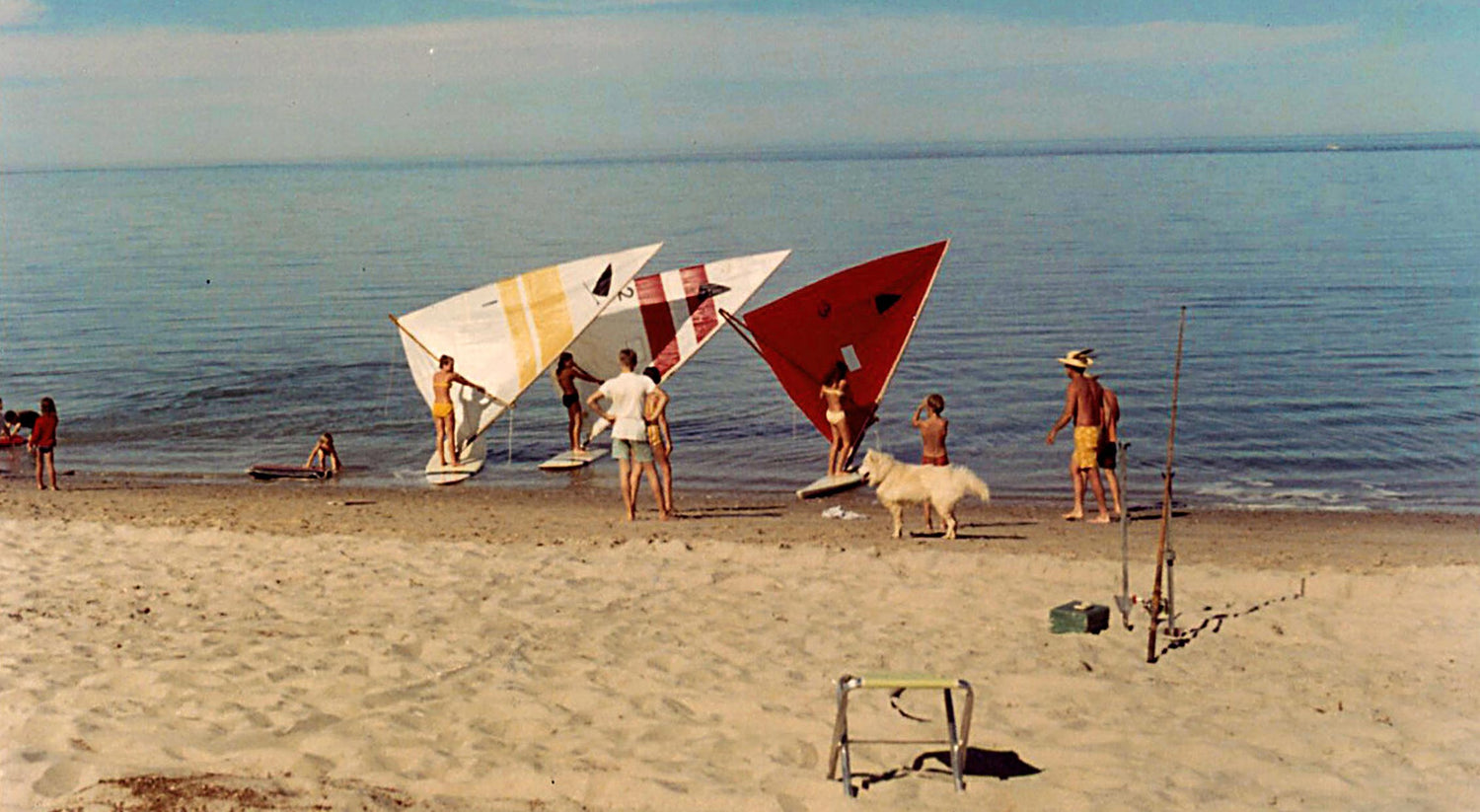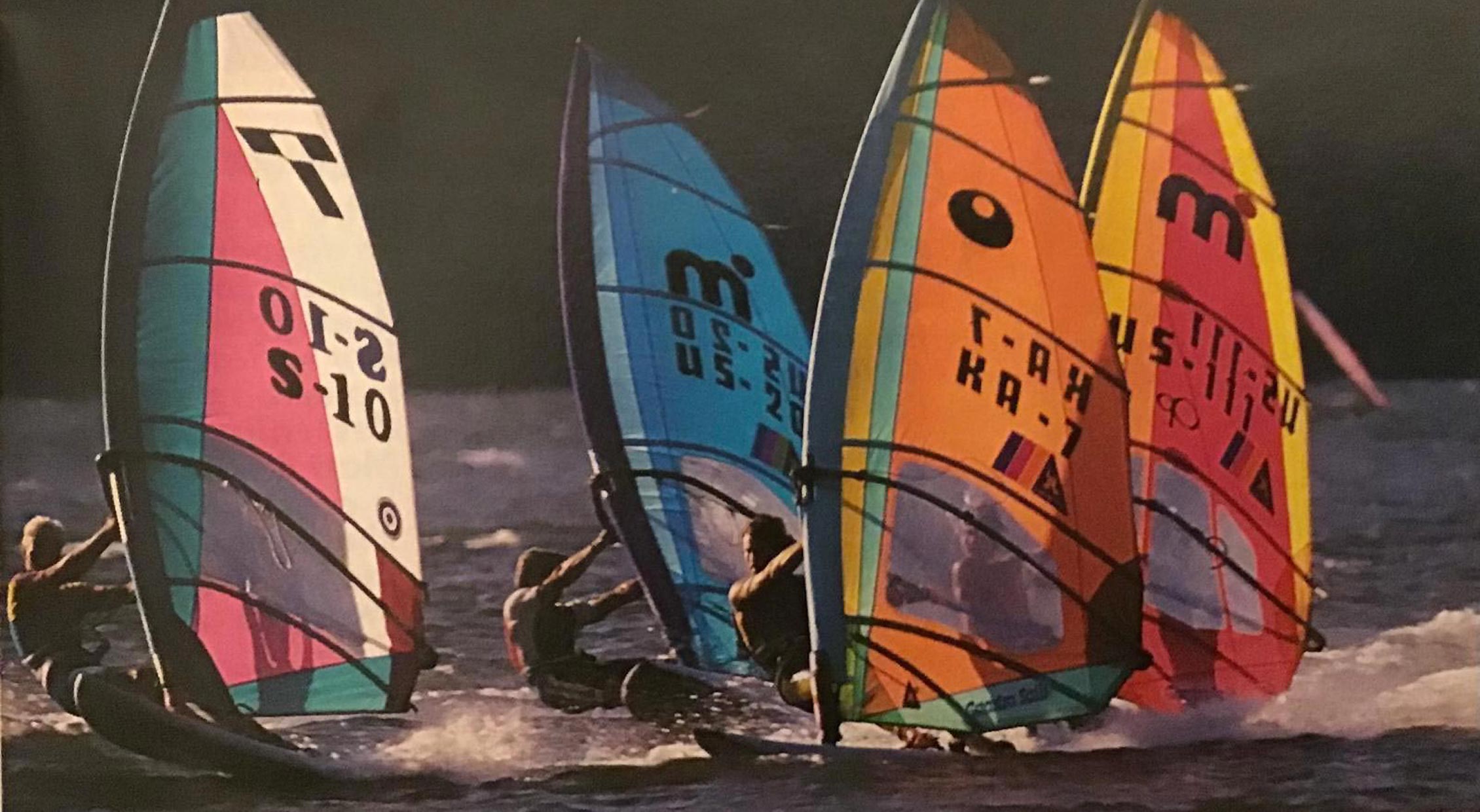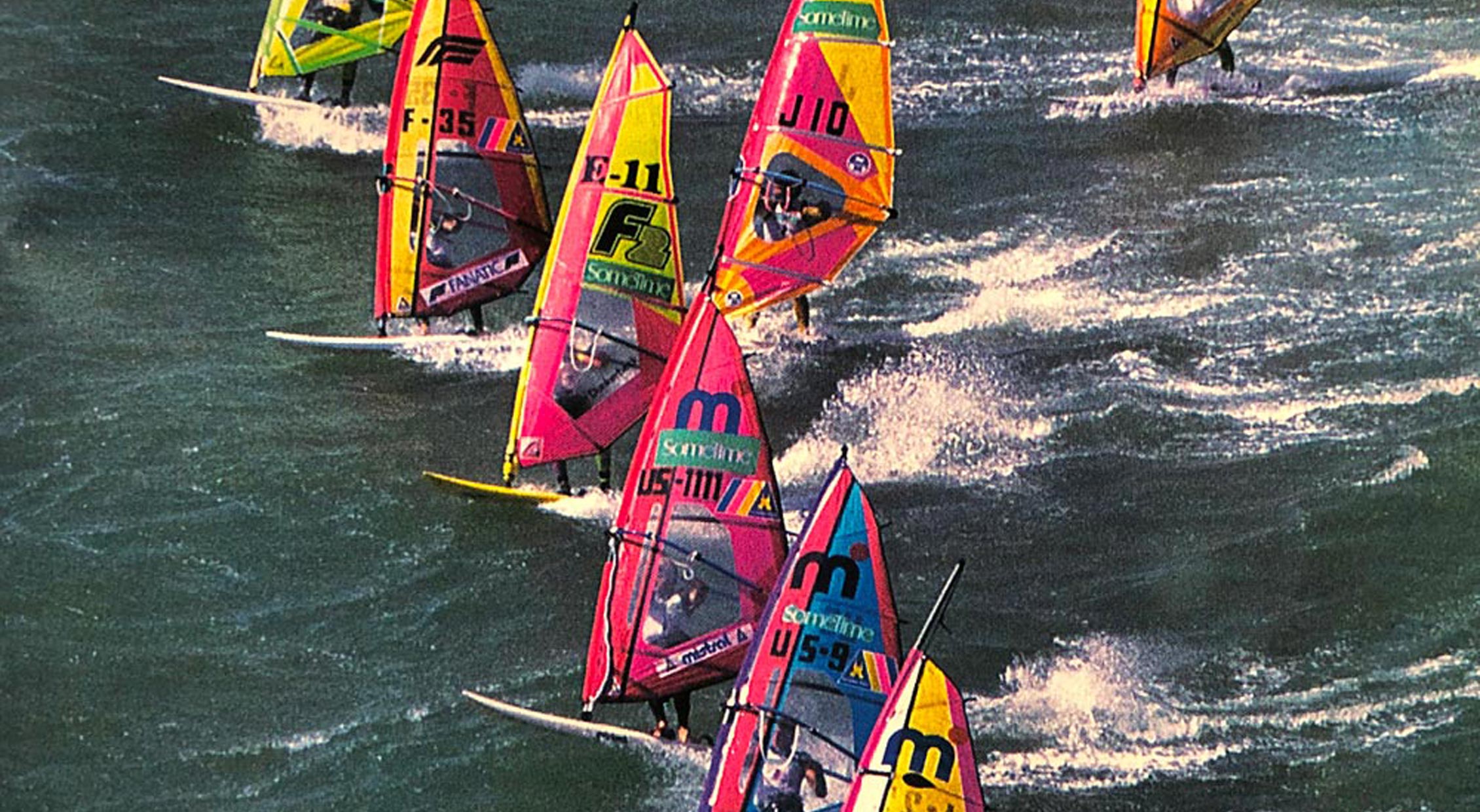The history of windsurfing is marked by a number of claims and contributions that have led to its development as we know it today. This video explores the different stages of its invention, the key figures involved and how the sport became a popular activity around the world.
The first attempts at sailing
The beginnings of windsurfing date back to 1940, when Tom Blake mounted a sail on a surfboard. Others claim that the invention came from Peter Chilvers, a young boy who also experimented with a sail on a board in 1958. The major innovation that enabled the sport to develop was the invention of the universal joint and the boom, making it possible to stand up and steer the boat. In 1965, Newman Derby proposed an idea similar to modern windsurfing, with a kite-shaped sail.
The rise and popularisation of windsurfing
However, it was in 1967 that Jim Drake and Hoyle Schweitzer, in California, developed a sailboard design using a boom and a Marconi-type rig. This design laid the foundations for modern windsurfing. Although the growth of the sport was initially slow, European pilots who had discovered it on their travels helped to spread the sport throughout Europe and, later, the world. Hoyle Schweitzer and his wife Diane played a crucial role in the marketing and promotion of windsurfing, ensuring its commercial success.
Conclusion
Despite various claims to the invention of windsurfing, it is Jim Drake and Hoyle Schweitzer who are primarily credited with revolutionising the sport. Their contribution transformed windsurfing into a popular water sports activity enjoyed by enthusiasts the world over. Thanks to their vision and promotional efforts, windsurfing has become an iconic water leisure sport.
Photo: Windsurfer Archives








Leave a comment
This site is protected by hCaptcha and the hCaptcha Privacy Policy and Terms of Service apply.